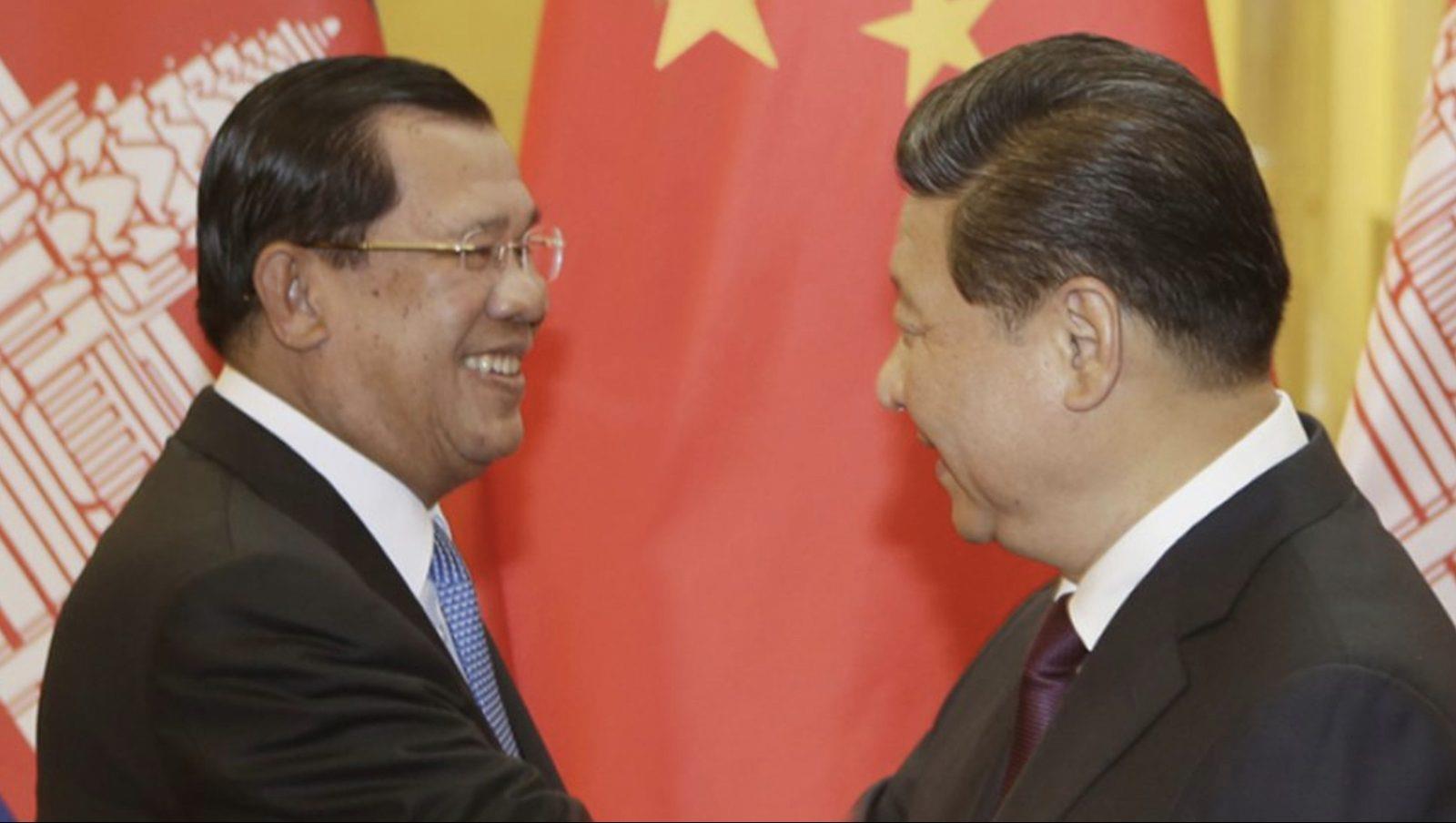
Breaking Down Cambodia's Naval Base Controversy
Cambodia's Ream Naval Base — a facility in the Gulf of Thailand — has in recent years been the subject of interest from major powers competing for influence in Southeast Asia.
China's efforts to access the base first surfaced in July 2019 after the Wall Street Journal reported an alleged agreement allowing the Chinese military to use the base. The Cambodian government facilitated a visit to the naval base for 70 local and foreign journalists to counter the findings of the report.
Despite Cambodia's efforts to dispel allegations of a Chinese military presence at the Ream Naval Base, suspicions continued to mount .
Following US Deputy Secretary of State Wendy Sherman's visit to Phnom Penh in 2021, the Cambodian government agreed to a visit by the Cambodia-based US Defense Attaché.
But the visit marked a downward trend in US–Cambodia relations as the US Embassy in Phnom Penh claimed that Cambodian military officials refused full access to the base.
A Cambodian defense official, interviewed under Chatham House Rules, provided a counter-narrative on the US visit. In response to Sherman's request, the Cambodian government formed a Coordination Working Group to meet the US Defense Attaché's requirements.
The visit included a one-hour meeting, visits to newly constructed buildings, an Australian-supported naval workshop and the construction of the new Tactical Command Headquarters at Koh Preab.
While the visit initially went according to plan, the US delegation demanded access to areas outside the visitation agreement's scope. From Cambodia's perspective, the sudden demand to access areas beyond what was agreed challenged its sovereignty and national security — so they rejected the delegation's demands.
The Cambodian defense official noted that the United States would react the same way if a foreign official demanded unrestricted access to the Pentagon.

Naval vessels docked at Cambodia's Ream Naval Base in a file photo. Photo: Twitter
Cambodian officials involved in recently-concluded research consistently highlighted the Cambodian navy's weakness in enforcing the kingdom's maritime security.
Shore-to-ship communication capabilities are lacking and the Royal Cambodian Navy is unable to track the movement and location of Cambodian navy vessels further out at sea.
The Ream Naval Base does not have the facilities to host large visiting warships and the surrounding waters are too shallow to host large foreign naval vessels. Visiting foreign naval vessels are regularly based at the nearby commercially-run Sihanoukville Port .
The recently announced Chinese-funded development project at the Ream Naval Base aims to provide the Cambodian Navy with the facilities and technology to address these shortcomings. The development project will improve medical and training facilities and repair eight Cambodian naval vessels.
Other new facilities will cover communication and surveillance systems, including communication and radar facilities critical for long-range shore-to-ship communication and tracking the location of Cambodian naval vessels out at sea. The waters around the base will be deepened, and wharves will be built to enable larger foreign warships to dock.
These developments will allow Cambodia to receive larger foreign naval vessels on goodwill or training visits at the base.
The Cambodian official added that China is funding the developmental project without any conditions attached. During the negotiations, the Chinese understood that Cambodia would not share control of the Ream Naval Base and that Phnom Penh would not take sides in the US-China rivalry.
The same official also noted that the United States had a keen interest in the naval base. When Cambodia demolished a US-funded building attached to the base in 2020, the United States reportedly offered to build two new buildings in return for shared authority over parts of the base, a proposal that Cambodia rejected.
There are legitimate operational reasons for Cambodia to develop its naval facilities and, by allowing China to fund the base's development, Cambodia is taking advantage of Beijing's efforts to win influence in Southeast Asia.

Cambodian Prime Minister Hun Sen, left, and Chinese President Xi Jinping during a bilateral meeting. Photo: Facebook
Yet Phnom Penh is aware of the sensitivity surrounding the base and the need to ensure that it is not used by foreign powers to harm the interests of ASEAN member states.
This sentiment was demonstrated by the joint Cambodian–Vietnamese declaration in December 2021 — that no hostile forces would be allowed to use their respective territories to harm each other's security. The Cambodian officials interviewed say that their position does not allow the Ream Naval Base to be used by one major power against another.
As US-China competition intensifies, the window through which Cambodia can extract benefits from competing patrons while resisting major power pressure to take sides is narrowing. Cambodian policymakers should consider this when charting the kingdom's course through the choppy waters of great power rivalry.
Abdul Rahman Yaacob is a PhD candidate at the National Security College (NSC), The Australian National University (ANU).
He was one of the four Chief Investigators in a recently concluded project on Australia–ASEAN defense relations which was hosted by NSC and funded by the Australian Army Research Centre. Some information for this article is derived from interviews with senior Cambodian defense officials.
This article was first published by East Asia Forum, which is based out of the Crawford School of Public Policy within the College of Asia and the Pacific at the Australian National University . It is republished under a Creative Commons license.

Legal Disclaimer:
MENAFN provides the
information “as is” without warranty of any kind. We do not accept
any responsibility or liability for the accuracy, content, images,
videos, licenses, completeness, legality, or reliability of the information
contained in this article. If you have any complaints or copyright
issues related to this article, kindly contact the provider above.
Most popular stories
Market Research

- Casper Network Advances Regulated Tokenization With ERC-3643 Standard
- Forex Expo Dubai Wins Guinness World Recordstm With 20,021 Visitors
- Superiorstar Prosperity Group Russell Hawthorne Highlights New Machine Learning Risk Framework
- Freedom Holding Corp. (FRHC) Shares Included In The Motley Fool's TMF Moneyball Portfolio
- Versus Trade Launches Master IB Program: Multi-Tier Commission Structure
- Ozzy Tyres Grows Their Monsta Terrain Gripper Tyres Performing In Australian Summers




















Comments
No comment